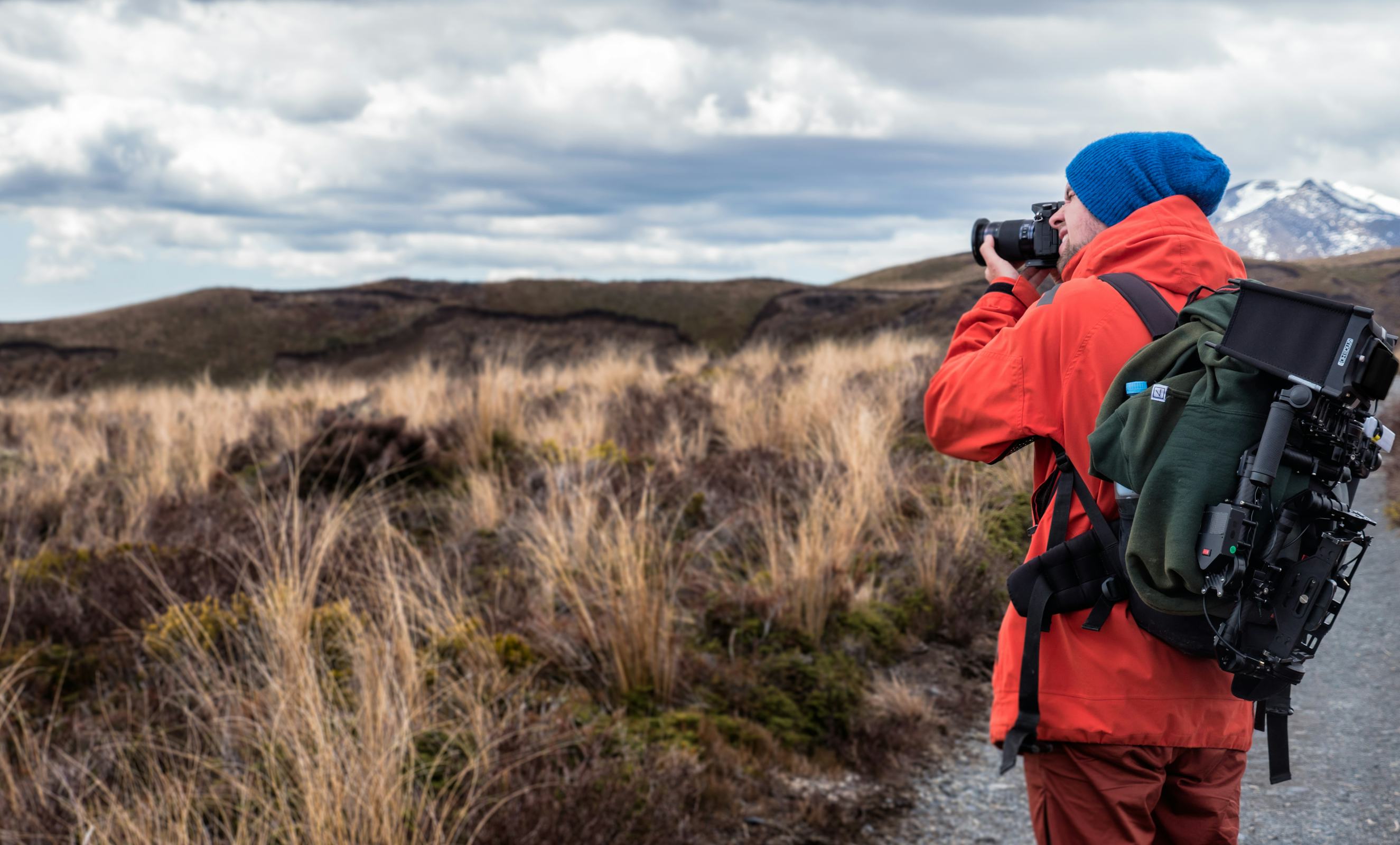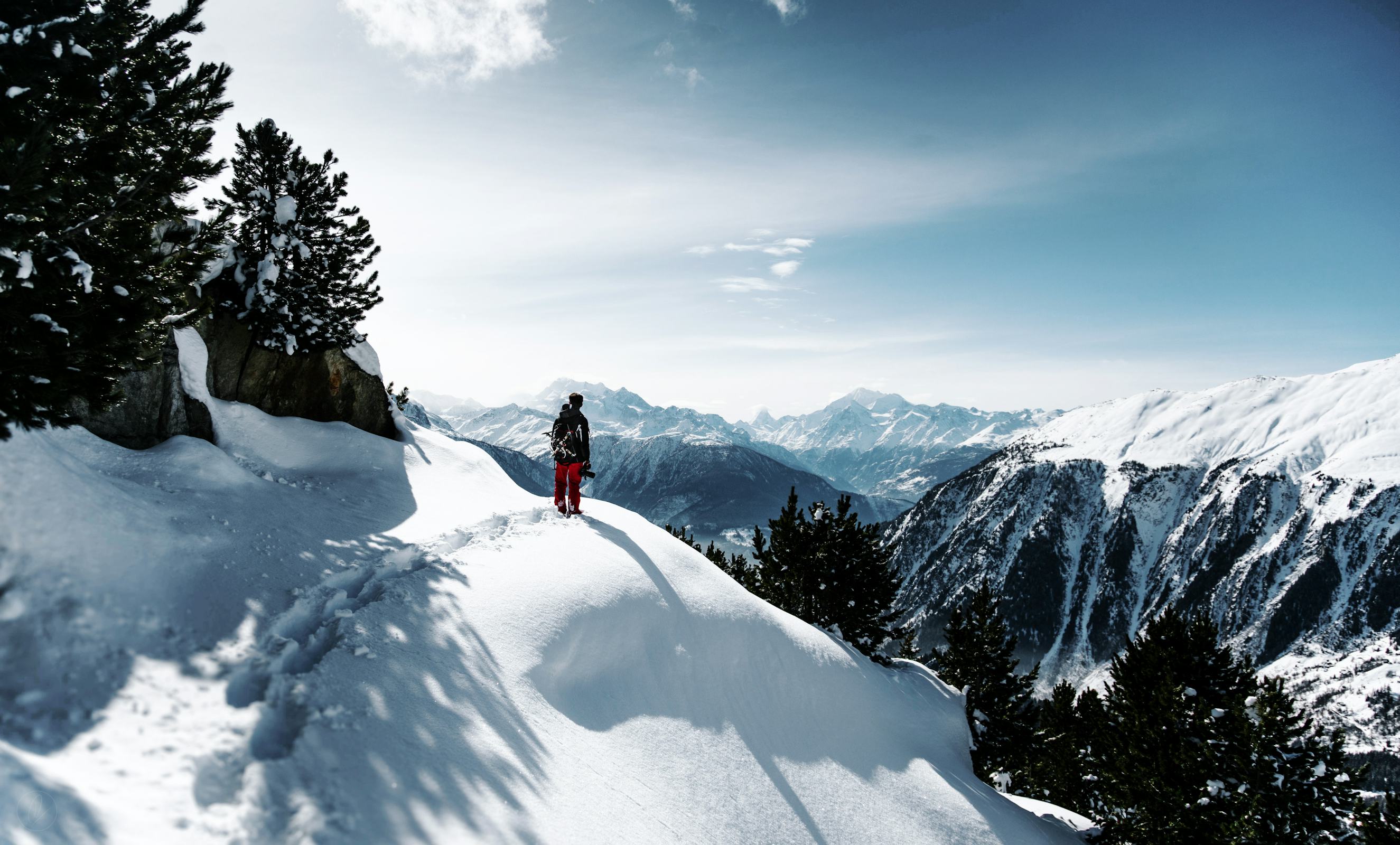The DSLR vs mirrorless debate is quickly becoming the new boxers or briefs question—and it’s making photographers equally uncomfortable. Whether or not you’re defensive about what kind of underwear, err, camera, you use, many photographers are making the switch. Landscape photographers in particular, are making the move to a more portable camera system—but why?
Chris Burkard, for example, shoots almost solely with Sony mirrorless cameras for his adventurous style of outdoor photography. So what’s so appealing to landscape photographers about mirrorless cameras? Here are six reasons that mirrorless cameras are coming out on top for landscape photography in the DSLR vs mirrorless debate.
DSLR vs Mirrorless: Portability
The biggest reason many pros are switching to mirrorless is the most obvious: portability. But that smaller body has more than one implication when shooting landscapes. Sure, the weight and size makes it easy to pack in a carry-on. But a smaller camera also tends to spend less time in the bag. Cameras that are comfortable to wear are more likely to be ready to shoot on a moments notice.
Portability also tends to go hand-in-hand with versatility, and that’s one characteristic that adventurous outdoor photographers are picking up on quickly. A mirrorless camera’s smaller size makes it easier to shoot from a bike or while hanging from cables on the edge of a cliff. Even a simple hike becomes much easier by ditching the weight of a larger system.
DSLR vs Mirrorless: Smaller Lenses and Accessories
The body isn’t the only way the mirrorless camera is lightening up the landscape photographer’s camera bag. The lenses that are compatible with mirrorless cameras are often much smaller. Wide-angle pancake lenses barely make a blip on the scale. A few years ago, the lens selection for mirrorless wasn’t near as extensive, but the industry is catching up, and most offer the right range of options for landscapes.
But, with a smaller body and lens, there’s also no need for a big tripod. Choosing a tripod with a lower maximum capacity makes it much more travel-friendly. While initially the body switch may only take a pound or two from the bag, slimming back on the lenses and tripod makes a significant dent in the size and weight of the bag that you’re taking on that ten mile hike.
DSLR vs Mirrorless: Electronic Viewfinders
Initially, many photographers wouldn’t even consider a mirrorless camera because the lack of a mirror meant there wasn’t a viewfinder. That’s changed with the introduction of the electronic viewfinder. While the optical big brother still has its advantages, there’s a number of perks to an EVF.
The biggest draw? Photographers can see the exact image that they are going to capture. Exposure adjustments appear in the EVF. Want to shoot in black and white? The EVF can show that too. The perks of the DSLR’s LCD screen, like the histogram and highlight warning, can now be viewed while shooting through the viewfinder. While a DSLR can show those same factors using Live View, seeing the information in the viewfinder is often essential when shooting outdoors in bright sunlight.
DSLR vs Mirrorless: Focus Peaking
The introduction of the EVF led to the development of another feature: focus peaking. By highlighting the portions of the image that are in-focus, focus peaking makes using manual focus much simpler. Most mirrorless cameras equipped with focus peaking will automatically zoom, then highlight the subject in red, taking more of the guesswork of getting that crisp, manually-focused shot.
For landscape photographers using techniques like focus stacking, focus peaking can be a big draw. The feature also helps reduce the risk of error when shooting macro or simply using manual focus for more control.
DSLR vs Mirrorless: Live Time
Some mirrorless cameras take the advantages of the EVF one step further—many Olympus models will also preview motion blur. The feature, dubbed Live Time or Live Bulb, helps eliminate wasted time finding the shutter speed that will capture the right amount of blur in a long exposure. While this feature is manufacturer-exclusive, it draws many photographers to cameras like the Olympus OMD E-M5 II.
DSLR vs Mirrorless: Individual Brand Personalities
Some professional landscape photographers aren’t choosing to switch because of the differences between a DSLR and mirrorless, but because of what some companies offer, body size excluded. Fujifilm and Olympus, for example, are no longer making DSLRs and while Sony still has some DSLRs on the market, they’ve received much less attention over the past few years.
The colors and film simulation from Fujfilm, like on the X-T1, have been a big draw for some landscape photographers. The affordability of Sony’s full frame a7 over some full frame DSLRs prompted a surge towards the camera (now a bit older and available for around $1,000, or with more features as the a7 II). And the Live Time feature on Olympus has been another draw. While some companies produce both, manufacturers tend to excel in producing one over the other, sometimes with big enough features to sway photographers over to the mirrorless realm.
One more thing that’s prompting the switch to mirrorless? Technology advances have helped make the differences in image quality non-existent. While there are still some small things that DSLRs tend to offer (chiefly, a much better battery life), when the image quality is similar, many landscape photographers are choosing the camera that they can take more places: the mirrorless.






